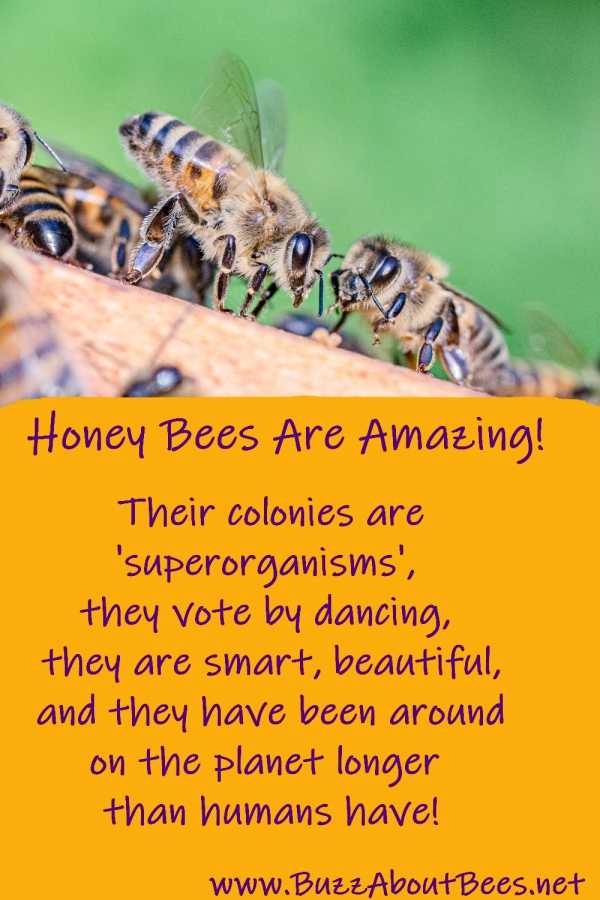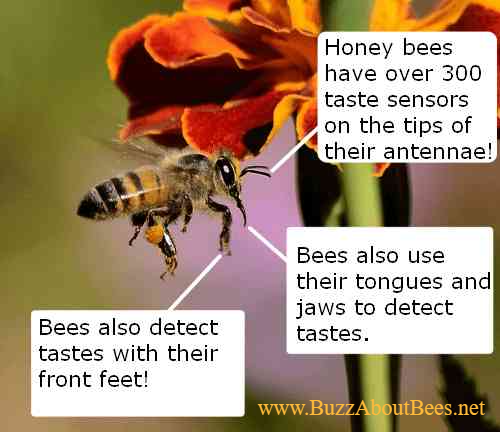Honey Bee Facts
Updated: February 2025
Here are 50 facts about honey bees, including quirky, scientific and historical points of interest.
If there is a snippet of information of particular interest, why not follow the link and bookmark the page for further reading?
50 Facts About Amazing Honey Bees
- The honey bee is also known as Apis mellifera. 'Apis' is a very old word, probably with Egyptian roots, but it is also thought that 'Apis' is related to the Greek word for 'swarm'. 'Mellifera' means 'honey-bearing' in Latin.
- If the queen honey bee is removed from the hive, within 15 minutes, the rest of the colony knows about it!
- Male honey bees (drones) have no father, but they do have a grandfather!
- Only female honey bees can sting, the males (drones) are not able to
sting.
- A queen honey bee is about twice the length of a worker.
- A honey bee queen may lay as many as 2000 - 3000 eggs per day as she establishes her colony.
- A typical active honey bee colony may have around 50,000 workers, but could have between 20,000 and 60,000 workers, or even more!
- Drones (male honey bees) die after mating!
- Foraging honey bees have to fly about 55,000 miles to produce a pound of honey, visiting around 2 million flowers. Learn more about how bees make honey.
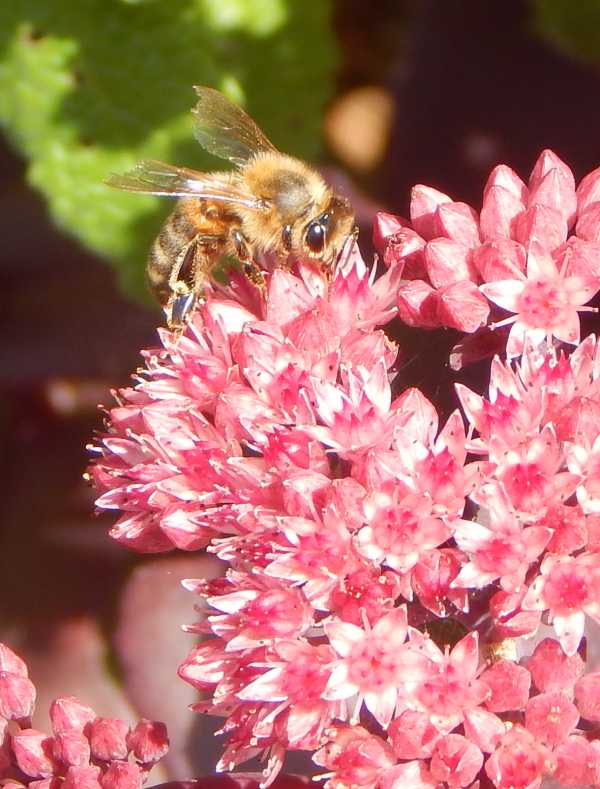 Foraging honey bees have to fly about 55,000 miles to produce a pound of honey, visiting around 2 million flowers.
Foraging honey bees have to fly about 55,000 miles to produce a pound of honey, visiting around 2 million flowers.- Honey bees may typically fly between 1 – 6 km on a foraging trip, but
also up to 13.5 km (I have seen it stated that 20 km has also been recorded, but
have not located the research paper to check this finding). Read about How far bees fly.
- No wonder honey bees need a lot of energy. Honey bees fly up to 15
mph and beat their wings 200 times per second or 12,000 beats per
minute!
- Each honey bee makes about 1 twelfth of a teaspoon of honey in its life time. Find out how bees make honey.
- The honey bee is the only insect that produces a food (honey) eaten by man in significant quantity. (There are other bees and also a wasp that makes honey, but in smaller amounts).
- Honey bees use their front feet, tongue, jaw and antennae to taste with!
- As with other types of bees, honey bees have 5 eyes. However, honey bees also have hairy, which is not the case for most bee species.
- Scientists have discovered that honey bees are able to 'vote' by dancing when making decisions about where the colony should create a new nest site!
- Honey bees, along with other bee species, are believed to be descendants of wasps.
- The honey bee is one of the most scientifically studied creatures in the world after man!
- Beeswax is produced by the young worker bees in a honey bee colony. It is secreted from the wax glands on the underside of the abdomen when the workers are between 12 and 18 days old.
- Honey bees belong to the insect order 'Hymenoptera' which they share with other bees, wasps, ants and sawflies.
- Scent is important for bees. A
study has found that bees are better at learning new odours (smells) in the morning.
- A honey bee colony is a 'superorganism'.
- The honey bee queen should certainly live 2 years, but may even live 3
or 4 years, whilst drones live for 55 days on average. Worker honey bees
raised in the Spring may only live 6 or 7 weeks (those raised in the
autumn may live 4 – 6 months). Find out more about the
honey bee life cycle.
- In a honey bee colony, the queen is the chief egg-layer, and whilst it's possible for worker females to lay eggs, only the Queen can produce females and new queens, worker female eggs would only produce drones (males).
- Honey bees make honey from nectar gathered from flowers, but they can also make honey from the secretions of aphids and some other insects, called honeydew honey.
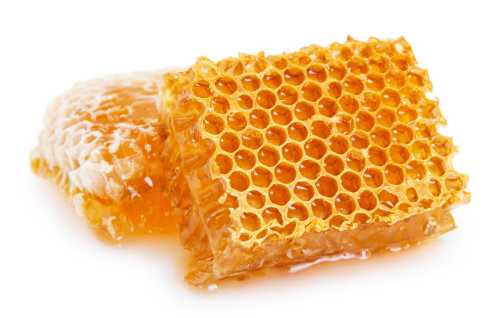 Honeycombs are hexagon-shaped cells made of beeswax.
Honeycombs are hexagon-shaped cells made of beeswax.- The hexagon structure of honeycombs enables bees to make super efficient use of beeswax, and guards against wastage!
- The 'Waggle Dance' or 'honey bee dance' enables worker honey bees to inform her sisters about great locations of food and water, or a new home.
- Like other bees, honey bees cannot see the colour red. However, they may visit red flowers because they are able to see the U.V. patterns in the flowers.
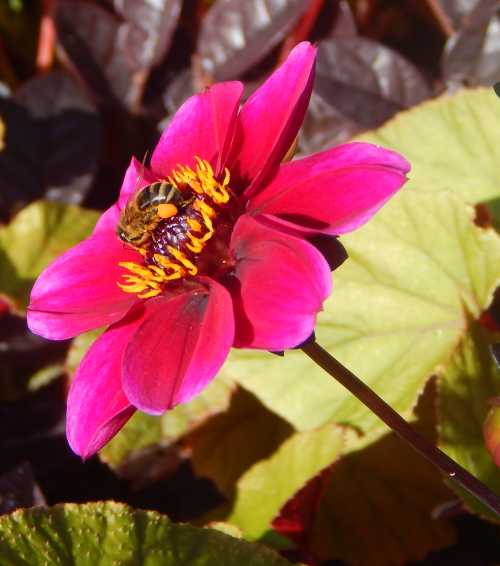 Honey bee - Apis mellifera visiting dahlia.
Honey bee - Apis mellifera visiting dahlia.- Almond crops in California are dependent on honey bee pollination, because the trees bloom in February, before many wild bee species emerge from hibernation. Read more about honey bees foraging in cool temperatures.
- To keep warm in winter, honey bees huddle together in a 'winter cluster'.
- Humans construct wooden hives to house honey bees. However, wild honey bee colonies nest in cavities, such as hollow tree trunks, caves, or even in man-made structures.
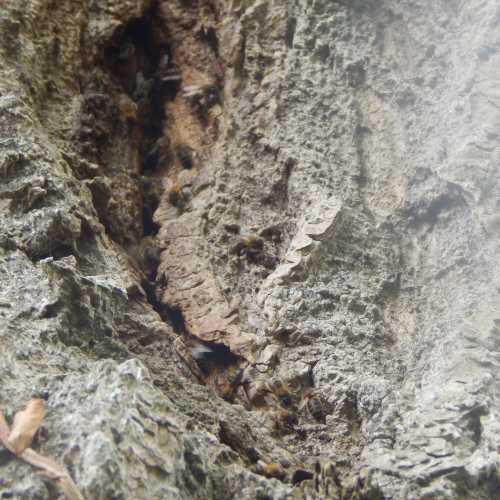 A wild honey bee nest in a tree trunk.
A wild honey bee nest in a tree trunk.- Scientists have studied honey bees, and have learned that honey bees sleep.
- Ever wondered whether honey bees poop? Yes they do - read about honey bee poop.
- A person who studies bees generally, is a melittologist. However, a person with a specialist understanding of honey bees is an apiologist - see 'What is a Bee Expert Called?'
Honey Bees Are Smart - It's A Fact!
- Honey bees are smart! Scientists have found that honey bees can understand conceptual
relationships such as "same/different" and "above/below".
- The honey bee's brain is about the size of a tiny grain of sugar, but researchers have found that it is surprisingly sophisticated.
- Honey bees have been trained to act as bomb detectors! Scientists have trained honey bees to react to minute amounts of chemicals found in explosives.
- Honey bees can be trained to detect illnesses in humans.
Honey Bees In History:
- Honey bees have been around longer than humans – there is fossil evidence from 150 million years ago!
- The earliest form of chemical warfare probably dates back to Turkey in 65 BC, and honey bees had a role in it, by producing toxic honey (or 'mad honey') after foraging on a certain plant. Read about toxic honey
- Different countries have kept bees in different ways. For example, in
Europe, people kept bees in straw baskets called skeps (sometimes in 'bee boles'), or even in tree
trunks adapted for the purpose.
In parts of the Mediterranean and Middle East, clay jars were used. Read more about the history of beekeeping. - The ancient Egyptians and other civilisations used honey as food and medicine. It was also
used in offerings and for embalming the dead. Beeswax was used in magic
rites, for preserving and also in medicine.
- Royal beekeeper to King Charles II of England said: "The bee is a exquisite chemist". Today the British Royals still remain keen on bees and beekeeping. King Charles III is certainly a 'bee-friendly Monarch' who has used his profile to raise awareness of the plight of bees.
- Humans have
been seeking out bees for honey for a long time! Mesolithic
rock-paintings in caves near Valencia, Spain, show honey hunters at
work. These paintings are believed to date back 6,000 years.
- It wasn’t
until 1586 that it was recognized that the head of the honey bee colony
is a female queen. This news was popularized by Charles Butler (the
‘Father of English Beekeeping’) in his book ‘The Feminine Monarchie’ in
1609.
Prior to that, it was assumed the head of the colony must be a male – a ‘king’. Even William Shakespeare, in Henry V, refers to honey bees living in a kingdom, with a king as ruler. - Honey can be fermented to make a type of wine, called ‘mead’. The
earliest evidence for the production of mead is from Northern China, and
dates back to about 7000 BC.
- In 1791, during the French Revolution, the government demanded a record of all bee hives. Honey was used as a source of tax revenue.
Many beekeepers who did not wish to pay more tax, destroyed their hives. - Honey has long been mentioned in religious holy books, such as The Bible and the Quran, and is sometimes used in religious ceremonies.
A Few Quirky Honey Bee Facts:
- When the fictional character, Sherlock Holmes retired to the Sussex
Downs in England, he became a beekeeper.
There is even a group called "The Retired Beekeepers" in England who are actually an international group of Sherlock Holmes enthusiasts. - Honey is loved by fictional characters Yogi bear and Winnie the Pooh.
If you found this page helpful or interesting, I'd really be grateful if you would share it with others - if not this page, perhaps another, such as Gardening For Bees.
Thank you so much :) .
